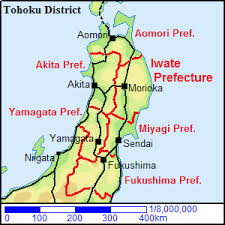Here is another guest article from By Thach Ho, the creator of
REgel.
REgel is an all-natural anti-inflammatory topical gel popular with athletes to relieve pain, repair injuries, and recover faster from workouts .
How to Recover from Injuries
R.I.C.E. (Rest, Ice, Compression, and Elevation) has been a standard for clinicians to treat injuries.
Recently, a new shift of using a holistic approach with a proactive progression will speed up recovery process, and that is called P.R.I.D.E.
RECOVERY 2.0: P.R.I.D.E.
- Protection
- Range of Motion
- Intake of Proper Nutrition
- Decrease Inflammation/Increase Blood Flow
- Exercise & Loading Progression
During the first three days during the acute phase of an injury, rest should be limited to a short time protecting the injury from further trauma. Within the last few years, numerous studies have shown prolong periods of rest can create adverse reactions and slow the healing process.
A cascade of events of an injury include, inflammation creating a barrier around the area with stagnation of blood and metabolic waste blocking new oxygenated blood flow. A proactive progression of increasing the range of motion, proper intake of nutrients, while decreasing inflammation will allow new blood flow to the injury. An exercise and loading progression is needed to correct any imbalances and weaknesses to rehabilitee and prevent re-injury.
PROTECTION
24-36 hours of immobilization of an injured area to prevent further trauma to the injury. Tools included splints, crutches, and ace bandage to create a compression of the injury. Elevating the injury can reduce swelling.
RANGE OF MOTION
After the protection period, emphasize on progressively increasing the range of motion by stretching and lengthening the muscle. Also, focus on isometric contractions of the muscle to rebuild proprioceptive sensory and motor control. This should be done multiple times per day especially after prolong sedentary states.
Numerous foods and natural
supplements have been studied to speed recovery. The body needs extra nutrients to rebuild the body. Examples include:
- Ginger, papaya, and pineapple- Contain Proteolytic Enzymes which breakdown proteins to speed recovery, repair damaged areas and reduce scar tissue.
- Turmeric, garlic, ginger- Anti-inflammatory & anti-oxidant that improves circulation, removing toxins and metabolic waste from damage areas.
- Chamomile tea- Relaxes muscle and nerves allowing the body to rest and repair.
- Tart cherries- Contain the highest anti-inflammatory & anti-oxidants content of any food. Tart cherries are great for people suffering from arthritis and pain.
- Avoid foods that can cause inflammation such as alcohol, sugar, and processed foods.
DECREASE INFLAMMATION & INCREASE BLOOD FLOW
After a muscle tear internal bleeding may occur. Ecchymosis or bruising will form and will remain until swelling and inflammation is reduced. Inflammation is the body’s natural response to protect it from injury and foreign invasion. For example, a fever when a person is sick or puffiness around the skin after a mosquito bite. By decreasing inflammation, blood flow can bring important nutrients to the injury.
Various techniques include:
- Ice-15-20 minutes to help reduce swelling and inflammation. Ice has only been readily available for the last 50 years due to the commercial availability of the refrigerator. Some countries do not use ice for inflammation and use other techniques.
- Ice/Heat Contrast- Technique that decreases inflammation but increases blood flow where it is applied.
- Cool Bath- Submersion under water can lower core temperature throughout the body to reduce inflammation.
- Arnica Montana-Diluted homeopathic pills can reduce bruising, reduce pain, and increase blood flow.
- Certain Foods- Turmeric, ginger, garlic, salmon can reduce inflammation and promote healing
- REgel- All natural topical anti-inflammatory gel that includes arnica, turmeric, and ginger.
- NSAIDs-Non-Steroidal Anti-Inflammatory Drug which includes ibuprofen, aspirin, and naproxen. NSAIDs should be used sparingly and for a short duration. Taking NSAIDs for prolonged periods can cause ulcers, bleeding, kidney problems, and heart problems.
EXERCISE AND LOADING
A complete rehabilitation program must have an exercise and loading progression to correct weaknesses and imbalances to handle the stress of competition. Selections of exercise should include surrounding muscles with
dynamic stretching and drills along with strengthening eccentric loads.
R.I.D.E.
The RIDE portion of recovery process must be reviewed and reevaluated periodically. Selecting and changing these variables allows the athlete to adapt to the stimulus. Understanding the reason for the injury and making necessary changes to training can reduce the chances of re-injury.
